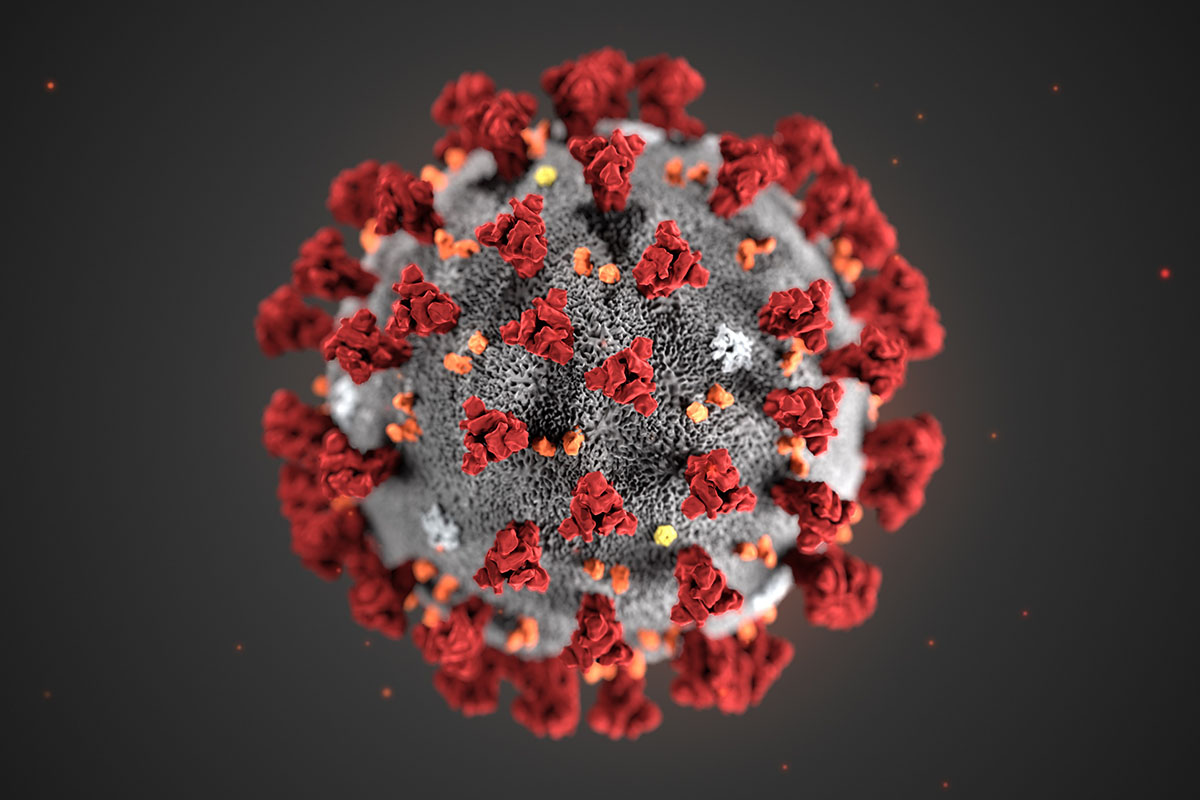 (Image courtesy of the CDC)
(Image courtesy of the CDC) As
coronavirus continues to spread around the world, DePaul’s Sarah Connolly, associate professor in health sciences and biological sciences whose research focuses on viruses, sheds light on the mechanics of the virus and what the campus community can do.
What is coronavirus and how is it spread?
Coronavirus, also known as 2019-nCoV, affects the respiratory system and causes fever, coughing and shortness of breath. This virus is similar to Severe Acute Respiratory Syndrome, known as SARS, Middle East Respiratory Syndrome, known as MERS, and other existing coronaviruses that frequently infect humans.
 Sarah Connolly is an associate professor in health sciences and biological sciences whose research focuses on viruses.
Sarah Connolly is an associate professor in health sciences and biological sciences whose research focuses on viruses.
It’s spread through respiratory droplets that come from sneezing and saliva. The virus likely can survive on surfaces, maybe for a few hours; however, experts have not determined that for sure yet because we are so early in this outbreak.
What qualifies an outbreak as a pandemic? Does coronavirus fall under that category?
Pandemic means a worldwide spread of the disease. This outbreak qualifies as a pandemic because it has crossed international borders into other countries and affected a large number of people.
Do we know where this virus originated?
Experts expect this virus came from an animal, possibly a bat. There are other coronaviruses in bats with similar sequences. If it did come from a bat, it may have first transferred into another animal before it transferred to a human.
How does the virus jump from an animal to a human?
This virus didn’t evolve to infect humans and maintain that infection among the human population. A “successful” virus in humans often is able to co-exist with humans without a high mortality rate, permitting the virus to spread through the population. This coronavirus may have evolved in bats, and jumping to a human was an accident caused by a random mutation.
How is coronavirus different from other viruses?
What’s interesting is sometimes viruses transfer into the human population but then can’t spread between humans. Unfortunately, this virus spreads between humans, making it a little more concerning. However, its mortality rate currently is estimated to be around two percent, which is comparatively low. One concern is that the virus may be able to spread before the symptoms show, making it harder to track. The extent of transmission in the absence of symptoms remains to be determined.
Can we see a difference between those who have survived from the virus and those who have not?
We do see a correlation between people who have pre-existing conditions and mortality from this virus. A person with a health condition who becomes infected with coronavirus may suffer a worse outcome.
We are not seeing many young healthy people dying from the infection at this stage, though it is still early in this outbreak and things may change. We don’t have the final numbers, but for now it looks like younger, healthier people are not at as much risk as people who have underlying conditions.
What precautions can we take?
Handwashing and keeping your fingers away from your face in order to not transfer germs to your nose, eyes and mouth are good measures to take. The virus should be easy to kill with disinfectant, such a Lysol, based on what we know about other coronaviruses.